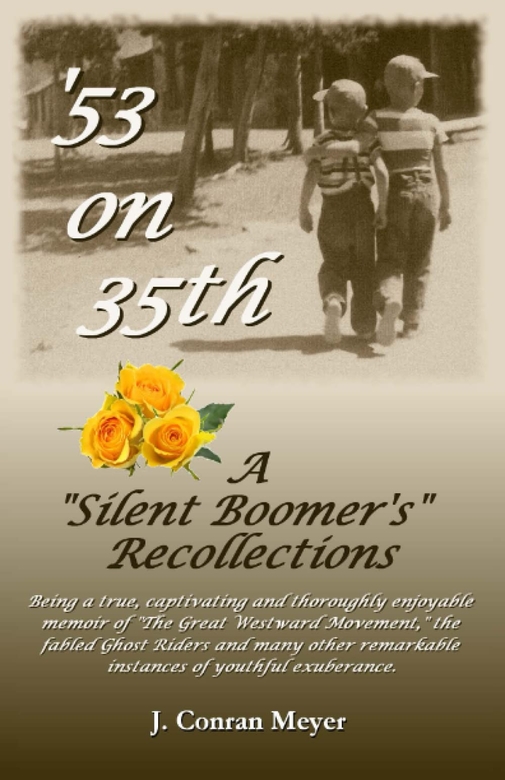
In ’53 on 35th: A “Silent Boomer’s” Recollections, J. Conran Meyer endearingly recalls a bygone time before technology and social media replaced a child’s reliance on fantasy and invention for fun and entertainment.
1953 was a seminal year for Meyer – at ages 8 and 9, he was powered and defined by his imagination, and that of his 35th Avenue neighborhood gang, including his younger brother, Nick, and his best friend, Billy. With folksy humor, elaborate tales, and obvious affection, Meyer recreates growing up in Sacramento, CA in great detail, complimenting the narration of his childhood experiences with commentary and musings on the differences between our current culture and the simpler time of the 1950s.
While imagination is a key theme here, as Meyer and his friends contrive intricate games and fantasies they fully and enthusiastically believed in, it is also a motif Meyer relies on to convey what he calls his “kidhood.” Despite being populated with the real people and places from Meyer’s childhood and things that actually happened, much of the rendering are more reconstructed than faithfully remembered; Meyer challenges the reader to determine whether he is telling the truth or re-imagining how things were.
None of Meyer’s reinventions take away from the enjoyment of reading about this group of fearless and funny kids, but the dialogue, for one, nearly always sounds more created than remembered. It seems unlikely that Meyer would be able to recall verbatim the lengthy and specific conversations that anchor nearly every chapter, or that these children would speak the way they do. While the embellishments do add engaging and entertaining details to all of the stories, it’s clear that many of them are enhancements of actual scenes and events.
As such, the book skirts the line between fiction and memoir. Throughout the book are varying sized sections highlighted in grey representing reverie, a term used to describe how kids can live inside their self-created fantasies and believe them to be real. The book cleverly has the same sense of invention – after all, it is wistfully harkening back to those innocent days. While some may take issue that the 50s weren’t necessarily as innocent as sometimes portrayed, one cannot argue with the innocence of childhood, which is perennial, and explored here with charm and insight.
Meyer’s own reverie featured his heroes, actors John Wayne, Erroll Flynn, and Robert Taylor, who often accompanied him on his adventures offering the wisdom of their experience in conversations with him during the events as they were taking place. However, these highlighted sections sometimes lack context, and are often jarring as there doesn’t seem to be a consistency to their use – they appear sporadically, sometimes taking up full pages and other times bursting in for a line or two and then not reappearing for several chapters.
That minor issue aside, anyone who loves being immersed in a story of nostalgia and the carefree optimism of youth will quickly become absorbed in ’53 on 35th, further enhanced by photographs of family and friends that contribute to this endearing window into history.
Book Links
STAR RATING
Design
Content
Editing
Get an Editorial Review | Get Amazon Sales & Reviews | Get Edited | Get Beta Readers | Enter the SPR Book Awards | Other Marketing Services






















Leave A Comment